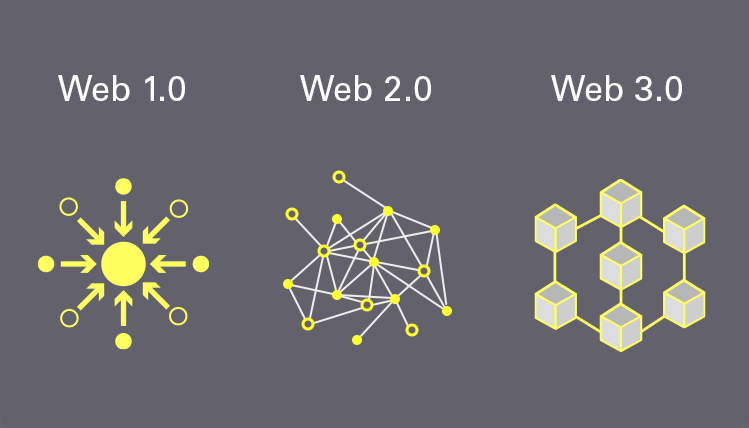Our world is increasingly moving towards Web 2.0, the era of digital platforms. However, blockchain, a disruptive technology of the Web3 era, is a digital platform itself (yes, we will prove it below). Where are we now? We are now in a transformative state, at the intersection of two digital eras: Web 2.0 and Web3.
In a previous article, we discussed that digital platforms have become a disruptive business model in the Web 2.0 world. Today they are the foundation of some of the most expensive companies in the world.
“The world’s most valuable companies and the first trillion-dollar companies are built on digital platforms that bring together two or more market players and grow through network effects.” — Michael A. Cusumano, Distinguished Professor of Management at MIT Sloan School and Director of MIT Sloan Management Review
Simply put, Features of the platform include:
- They are intermediaries that connect supply and demand in one or several markets.
- Buyers and sellers can use the infrastructure to exchange value (e.g. products, money, content, etc.).
- Being intermediaries, they receive a percentage of each transaction, e.g. Airbnb), monetizes information about users (Facebook), etc.;
- The platform exists online.
WEB3 motto: Cut out the middleman
In a world where all market power belongs to intermediaries (aka digital platforms), technologies emerge that aim to eliminate intermediaries. It is a blockchain.
“While most technologies tend to automate peripheral workers performing menial tasks, blockchain automates the center. Instead of putting taxi drivers out of a job, blockchain puts Uber out of a job and allows taxi drivers to work directly with customers.” — Vitalik Buterin, founder of Ethereum cryptocurrency
So what are the core functions of blockchain?
- This technology connects supply and demand. These are exactly the same characteristics as digital platforms. However, the demand side of blockchain is people wanting to verify transactions using distributed ledger technology. The supply side is the verifier that verifies the transaction.
- Value is exchanged on the blockchain. The demand side receives verification services and the supply side receives compensation. Again, this functionality is consistent with the main function of digital platforms: providing an infrastructure for value exchange.
- The system exists online as well as on a digital platform.
So we can see that blockchain is a digital platform itself! But digital platforms are not intermediaries. It sounds revolutionary, but it’s true. Blockchain, which undermines markets based on digital platforms, is a digital platform itself.
Like any other platform, the success of blockchain depends on its ability to attract users on both the supply and demand sides simultaneously.
But here’s a question. How will this technology, which encourages the removal of intermediaries, change markets?
And is it so?
The idea of the WEB3 platform
The core ideas of the Web3 platform are:
1. Based on blockchain.
2. Completely decentralized.
3. User data is not stored centrally or used commercially.
Doesn’t it sound like a dream?
WEB3 Platform: Dreaming in Reality
Here are a few examples of fully decentralized platforms that meet the high ideals of the Web3 era.
One. BeeToken (Decentralized short-term rental platform)
2. SnagRide (Decentralized taxi ordering platform)
three. Employee (Decentralized job search and recruitment platform)
WEB3: Why do markets not change under the influence of new technologies?
As you can see, the world needs Web3 solutions, but blockchain platforms are still less popular than “traditional” digital platforms.
As mentioned earlier, BeeToken, SnagRide, and Aworker can hardly be considered full-fledged competitors to Airbnb, Uber, and Head Hunter.
The reason for the unpopularity of decentralized platforms today is user habits. Despite all the complaints about the market behavior of Web 2.0 digital platforms, users take this as a guarantee.
The features of digital platforms (ratings, property photo verification, etc.) allow users to not question the trustworthiness of anyone they find on the platform as much as they trust the platform itself.
So what can blockchain offer?
Blockchain offers a fundamentally different mechanism. This means you don’t have to trust anyone (neither the other party nor the intermediary). It is a technology that makes transactions transparent and safe.
At D&A Partners, we are confident that the evolution of the metauniverse will inevitably lead to a fully decentralized digital platform. The main differences from the Web 2.0 generation platforms can be categorized as follows:
Where are we now?
We’re somewhere between Web 2.0 and Web 3.0.
A transitional form of digital platform is one that operates using blockchain technology but maintains the presence of intermediaries between the supply and demand sides.
An example of this generation of platforms is OpenSea. OpenSea is often considered the next generation of decentralized blockchain platforms.
“OpenSea is a decentralized NFT (Non-Fungible Token) marketplace where you can buy, sell and trade NFTs.” — Moralis Academy
This is not true! In fact, the OpenSea digital platform is as centralized as Amazon. For example, as an intermediary, OpenSea charges for each transaction and moderates the content (blocking users, deleting NFTs, adding collections to front page favorites, etc.).
Nonetheless, most NFT marketplaces show early signs of Web3 generation platforms.
- NFTs, which are products traded on the platform, exist on the blockchain.
- Marketplaces generally do not create barriers to entry for either sellers or buyers. Any user can publish tokens and sell them as NFTs. Anyone with a cryptocurrency wallet can purchase NFTs.
- Payments on these platforms are made using cryptocurrency.
Now we seem to be living in the world of Web 2.5 and can already “sense” better technologies. But it will take time for each of us to experience its benefits and fully embrace the new reality.
How long do you think it will take for humanity to trust the technology rather than the platform and step into Web3?
This article was written by the author. Catherine Smirnova To learn more about our team and services of digital and analog partners, visit dna.partners.
Go digital, go analog, join us!

